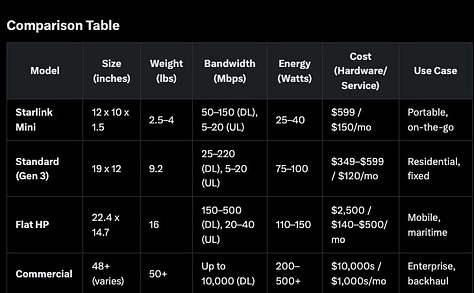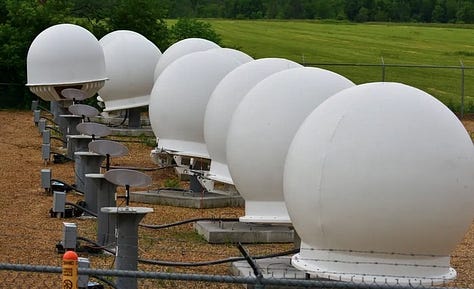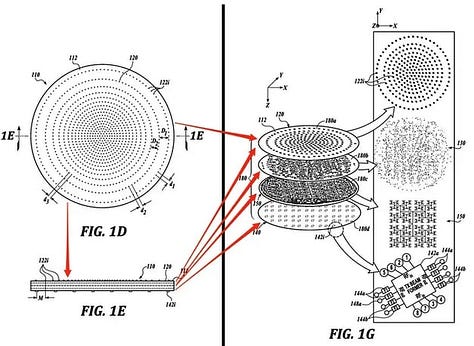SpaceX Starship Orbital, Catch in 60 Days and Worldchanging Giant Starlink Satellites
By Brian Wang
SpaceX launches the 8th Starship flight tomorrow March 3, 2025. There will be four dummy version 3 Starlink satellites deployed. If this test is successful it will set the stage for version 3 Starlink satellites on all future Starship test and real flights.
SpaceX Starship will go Orbital after the launch tomorrow. There will be catch of the upper stage and not just the booster within 60 Days. The Worldchanging Giant Starlink Satellites will double or triple the rate of Starlink broadband capacity deployed in 2025 and the rate of capacity deployment will go to 100X times the current level in 2026. The entire 40,000 satellite V3 constellation will be fully deployed in 2026. This will be 60-100 times the capacity for broadband and cellphones.
SpaceX will get permits for even larger constellations of 120,000 V4 satellites and continuing expansions.
The upcoming deployment of SpaceX's Starlink Version 3 (V3) satellites, beginning with the dummy units on Flight 8 and transitioning to full deployment with both expendable upper stages and then reusable Starship upper stages in April and May, is worldchanging progress in both launch and satellite internet technology. Each Starlink V3 satellite will have about ten times the bandwidth of the V2 Mini satellites, and a full Starship loads this year will start delivering 60 terabits per second (Tbps) compared to 3 Tbps for a Falcon 9 load of V2 Minis. The capacity upgrade is substantial and will increase. A version 3 Starship will start flying by the end of 2025. This would increase satellites per flight and further improvements of the satellites, lower altitude operations for higher direct to cellphone bandwidth. SpaceX aims to place 40,000 V3 satellites in orbit—versus the current ~7,000 V2/v1.5. Six times the satellites with 10 times the bandwidth for high speed internet and I project even high leaps in direct to cellphone capacities.



SpaceX Starship's next and ninth launch IFT9 will go fully orbital, likely launch real version 3 Starlink satellites and will attempt to catch the Starship upper stage as well as the booster.
Impact on Urban Usage for Direct-to-Cellphone and High-Bandwidth Users
With 40,000 V3 satellites, the Starlink network’s total capacity will increase dramatically compared to the current 7,000 V2 Minis. This expansion will influence cities differently depending on the service type:
High-Bandwidth Users: Each V3 satellite is expected to provide around 1 Tbps of usable bandwidth for broadband services. This means a full constellation could theoretically offer tens of thousands of Tbps globally. In urban areas, where terrestrial infrastructure like fiber-optic networks already delivers high-speed, low-latency internet, Starlink is unlikely to replace these services. However, rural areas and suburbs with lower population densities can be well served. Higher capacity will give more and more commercial options even for high density urban areas. Ten V3 satellites with direct line of sight at any time over each metro area would give 10 Tbps of high bandwidth capacity and could reach 10 Gbps for direct to cellphone capacity (assuming near term phone antenna, V3 modifications and the lower altitude).
V3 won't replace fiber for high density urban areas but providing additional capacity for high-bandwidth users—especially those requiring mobile or temporary connections (e.g., outdoor events, disaster recovery, or remote work sites). Terrestrial diber networks remain more efficient and cost-effective for most urban residents due to their established infrastructure.
Direct-to-Cellphone Service: Starlink’s direct-to-cellphone capability aims to connect standard, unmodified cellphones by acting as “cell towers in space” using LTE/4G protocols. Unlike broadband, this service focuses on basic connectivity—text messaging, voice calls, and limited data—rather than high-speed internet. SpaceX has indicated that each satellite can provide 2–4 megabits per second (Mbps) per cell zone. However, I think this will greatly increase with larger satellites at lower altitudes. The current tested satellite to cellphone is enough for thousands of voice calls or millions of text messages simultaneously in each cell zone. A bigger satellite can service more cell zones. In cities, this could eliminate cellular dead zones and complement existing mobile networks, but it won’t compete with 4G/5G for data-intensive tasks like streaming.
Satellite Distribution and Usage Assumptions
3% of the satellites are over the US at any time. With 40,000 V3 satellites this would be about 1,200 satellites overhead, assuming a roughly uniform global distribution (though actual placement depends on orbital planes and inclination).
Orbit at 350 km: Satellites per Urban Location
The V3 satellites will operate at a 350-kilometer altitude, lower than the ~550 km of V2 Minis. This reduces latency (improving responsiveness) and shrinks each satellite’s coverage footprint, allowing for more focused beams. In higher-density urban areas, this means multiple satellites can overlap in view, increasing total bandwidth and capacity:
Coverage Estimate: At 350 km, a satellite’s field of view is roughly 500–600 km in diameter, depending on its antenna design and beam configuration. For a large city (e.g., spanning 50–100 km), several satellites could be in range simultaneously—potentially 5–10 or more, depending on their exact distribution and the city’s size. This overlap enhances service reliability and capacity in dense areas.
Overall Bandwidth for 20% of Urban Users
Each V3 satellite offers ~1 Tbps for broadband. If 1,200 satellites are over the US, the theoretical capacity is 1,200 Tbps, though not all would serve urban areas exclusively (some cover rural regions or oceans). In a city with multiple satellites overhead (say, 5–10), the local capacity could be 5–10 Tbps. How this splits among users depends on demand and allocation—Starlink typically limits individual connections to 20–100 Mbps for residential users. There are usage factors that improve this. All users of internet and cellphone usually using only a tiny fraction of available bandwidth. Network providers plan for this to service more customers.
V3 Satellite 1 Tbps and Increasing
Each V3 satellite is planned to have ~1 Tbps (1,000 Gbps) of usable broadband capacity. Some sources mention up to 4 Tbps of total throughput (including RF and laser backhaul), but the customer-facing bandwidth is closer to 1 Tbps per satellite. The 60 Tbps from a Starship launch aligns with ~60 satellites at 1 Tbps each, supporting this figure. A 200-250 ton payload capacity version 3 Starship could see 120 V3 in each launch. this would be 120 Tbps. A V3.X satellite will continue to increase capacity for both broadband and cellphone services. I expect faster improvement for cellphone service capacity.
Direct-to-Cellphone Bandwidth
Broadband vs. Cellphone: The 60 Tbps figure relates to a Starship load of V3 satellites for broadband, not direct-to-cellphone service.
Keep reading with a 7-day free trial
Subscribe to next BIG future to keep reading this post and get 7 days of free access to the full post archives.




